Envy apples: Sweet red apples with a coveted crunch
Disclosure: This article may contain affiliate links, meaning we may earn a small commission if readers purchase products through these links. As an Amazon Associate, we earn commission from qualifying purchases.

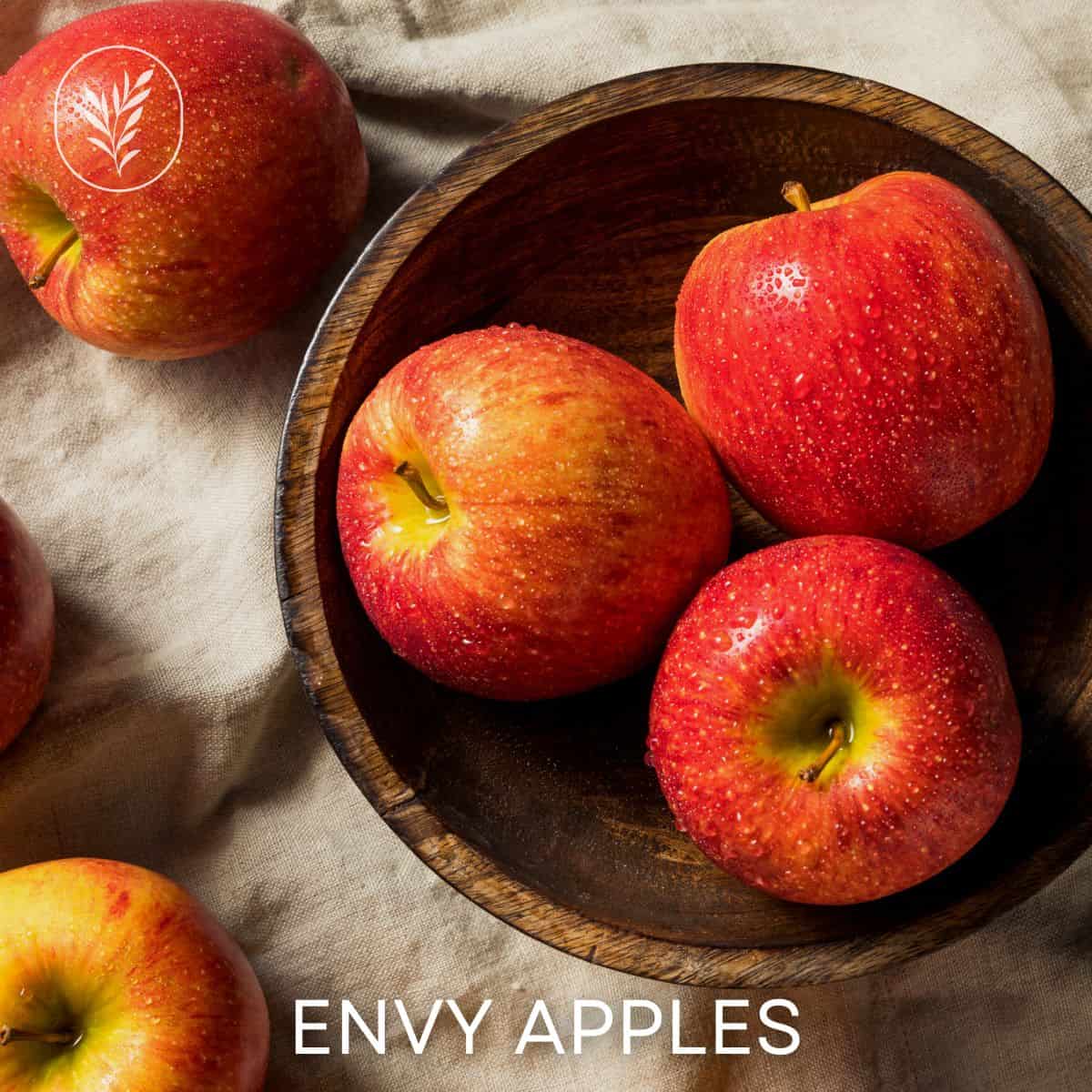

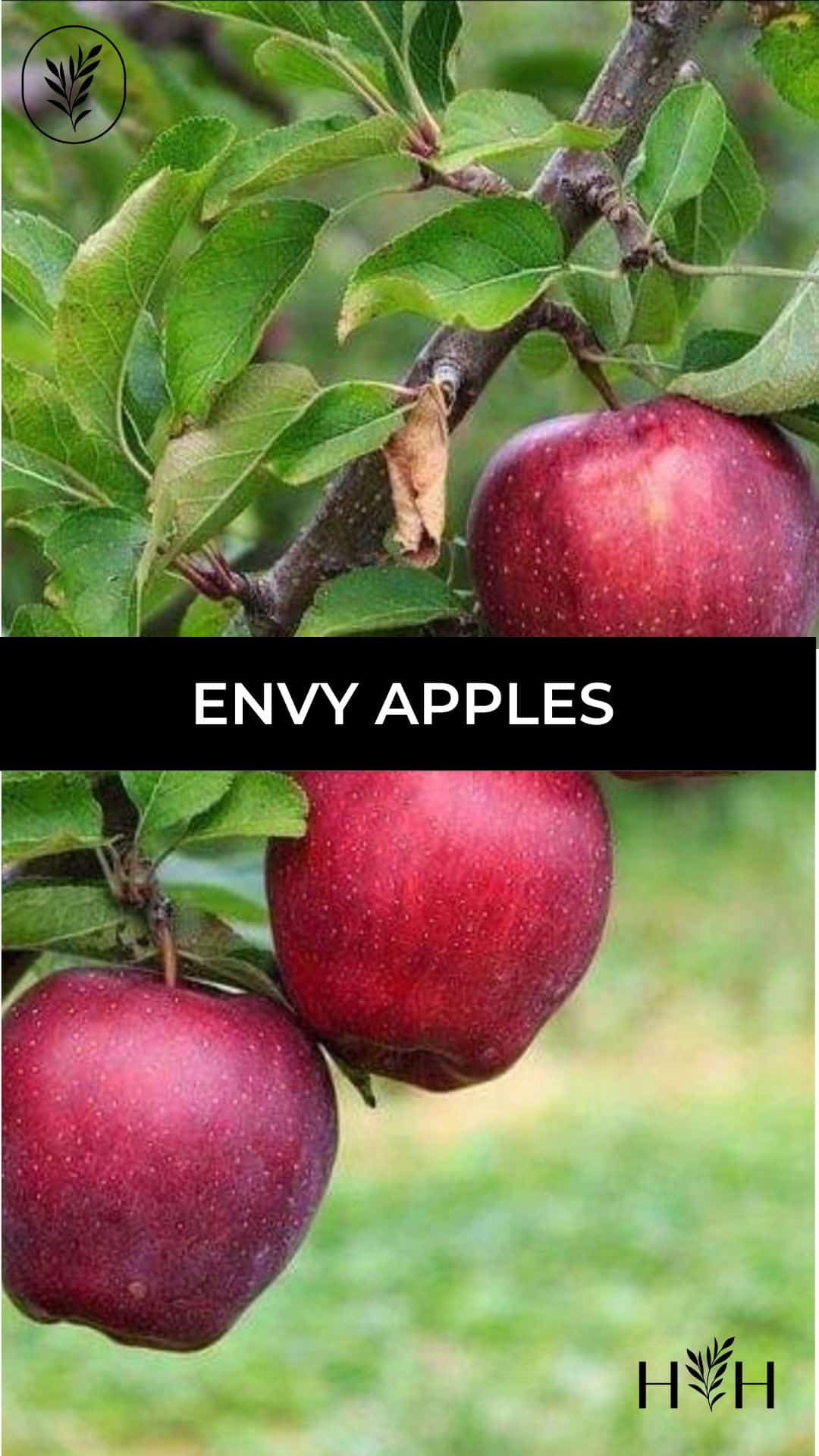

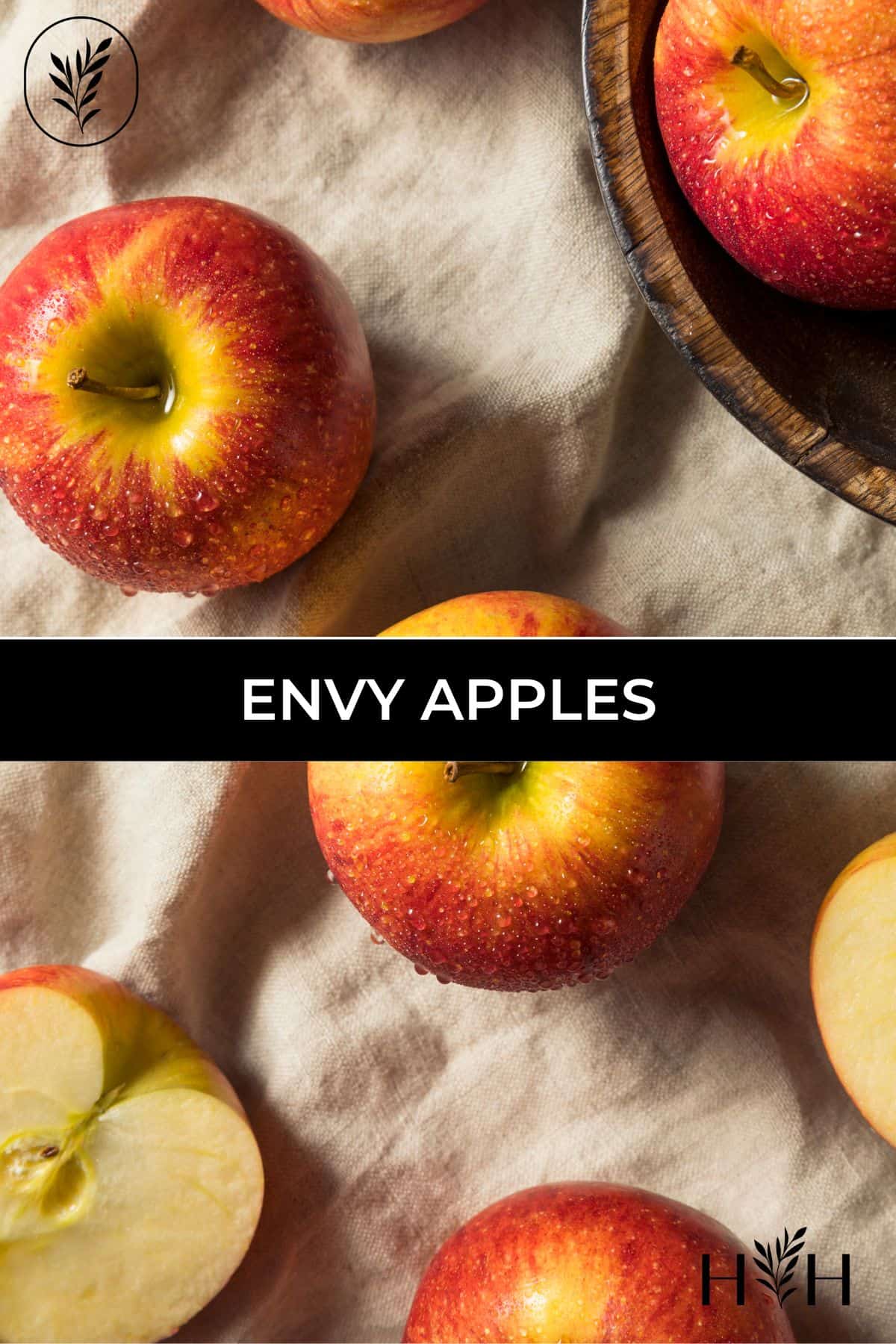
Looking for perfect all-around classic big red apples? The Envy™ Apple might just be your pick!
Envy™ Apples are sweet, juicy specialty apples with classic red coloring and a rounded shape. The flavor is sweet and the texture is crisp, providing a satisfying crunch when eaten fresh. Envy Apple flesh is also very slow to brown when cut, making it perfect for apple slices and salads. Envy Apples are quickly becoming one of the most popular specialty club apples.
There are quite a few reasons that Envy™ apples have caught on so quickly. Read on to learn all about this coveted cultivar.
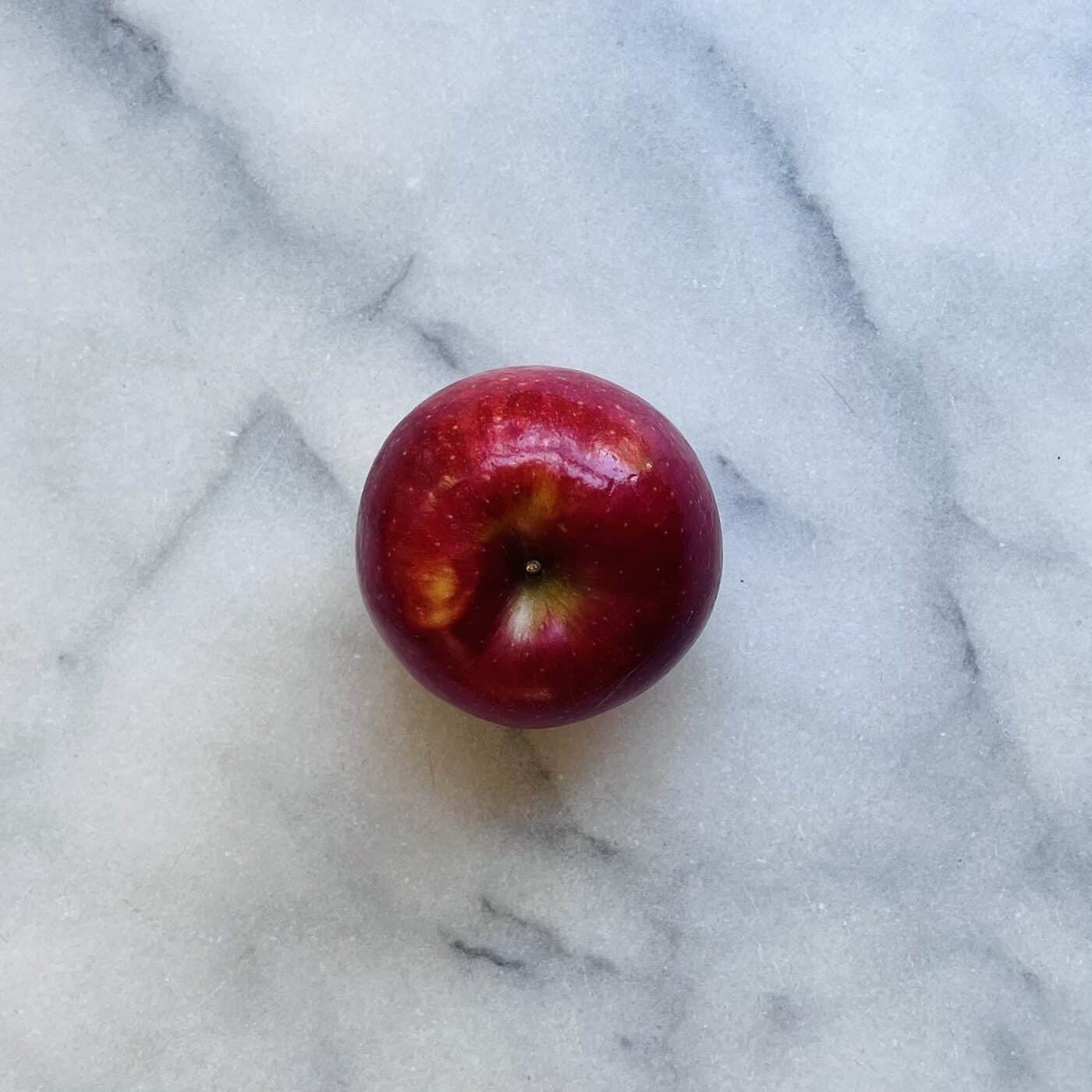
Origin of Envy™ apples
Envy Apples were developed in New Zealand by their famed national fruit research institute. Envy™ is the trademarked brand name for an apple tree variety named ‘Scilate’. The Scilate/Envy™ apple was bred in 1985 by the crown corporation Horticulture and Food Research Institute of New Zealand Limited (now part of the New Zealand Institute for Plant and Food Research). Envy Apples are now grown around the world, including in apple-growing regions of the United States and Europe.
The Envy Apple has famous parents! The Royal Gala Apple is one of the most-grown types of apples in the world and is known for its excellent crisp, sweeter taste. The Braeburn is known for its balanced sweet-tart taste, as well as its storage ability and perfect cooked texture in pies and tarts. Like Envy, both of these parent apples are from New Zealand. The Gala was developed as a seedling in the 1930s while the Braeburn was discovered as a chance seedling in the 1950s.
The Envy Apple was created with the natural cross-pollination of these previously-discovered named cultivars. This sweet variety has no genetic modification (they are non-GMO) and uses organic cultivation. These apples were bred as a natural plants using centuries-old breeding techniques. Like the Envy Apple, the popular Jazz Apple was also bred from Royal Gala and Braeburn. So, while Envy Apples and Jazz Apples are not the same, they are sibling varieties.
“The new variety was selected from a population of seedlings derived from crossing the apple varieties ‘Royal Gala’ and ‘Braeburn’. The cross was made in 1985 on trees located on land controlled by the Horticulture and Food Research Institute of New Zealand Limited at Havelock North, Hawkes Bay, New Zealand.”
Apple tree variety named ‘Scilate’, US Patent US20080209602P1
Envy apples are grown through the Integrated Fruit Production Method, which takes environmental concerns into consideration during production. This method involves minimal usage of insecticides or fungicides, and even then it’s highly controlled.
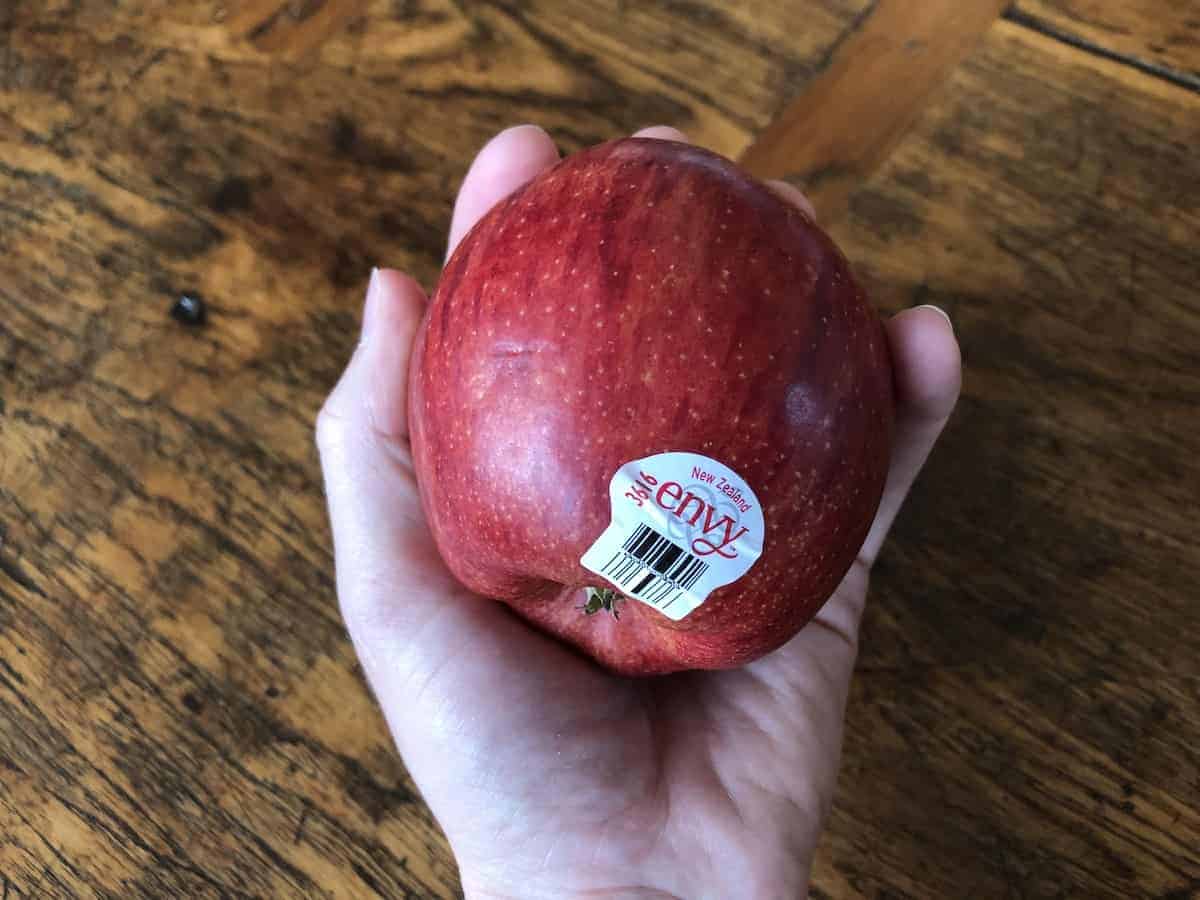
Whole, halved, sliced or diced? The Envy apple has a beautifully balanced sweetness and exquisite aroma whichever way you choose. Tell us, which way do you prefer to enjoy yours? #EnvyApple #Applegoals #Delicious #Aroma pic.twitter.com/n5r4fL0z19
— Envy Apples (@EnvyApples) August 12, 2020
What do Envy apples taste like?
Many consider Envy™ Apples to be the best-tasting apples as they are sweet with a well-balanced hint of crisp tartness. The taste is reminiscent of a gourmet Asian pear, with aromatic notes of florals and vanilla. The sweet flavor is a lovely contrast to the crunchy, firm apple texture.
Envy Apples have thick red skin with a yellow-green background. This peel helps to give them that satisfying “crunch” when you bite into them. These apples also have tiny dotted white lenticels (pores), with the specks visible on the skin. Envy Apples have a similar appearance to Honeycrisp, but generally with a larger area of red blush in the peel. The thick peel is generally removed in cooked applications such as applesauce and for apple pie.
Envy Apples have naturally white flesh that tends to brown slowly. This makes this variety perfect for low-calorie fresh snacks like salads or fresh fruit and vegetable trays. Apples are naturally low in calories while containing moderate amounts of dietary fiber. They also contain quite a bit of water. While they don’t contain significant amounts of protein or fats, apples can be added to protein-rich dishes for a meal with balanced nutrients.
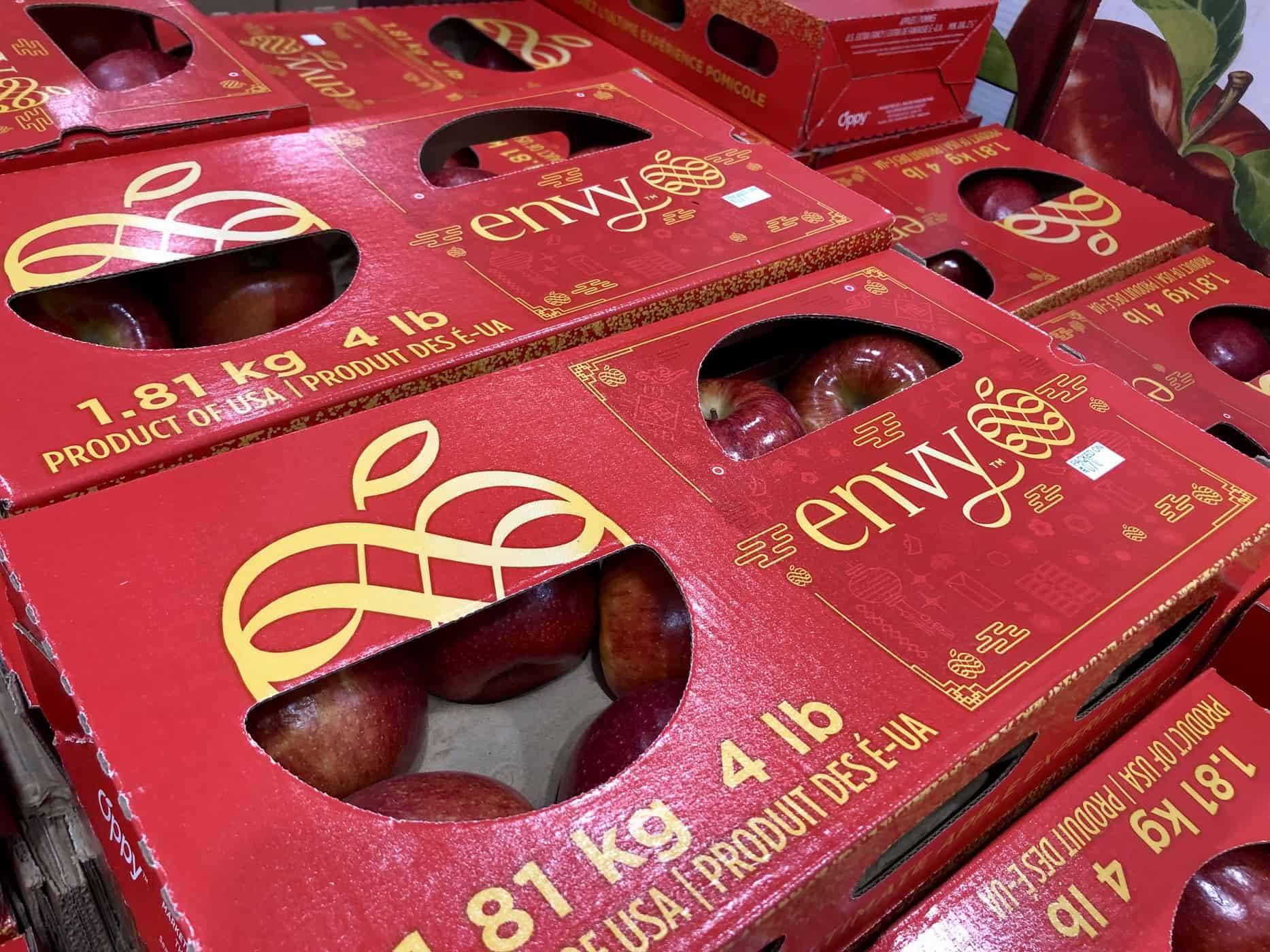 Usa-grown envy apples for sale at costco in january 2022
Usa-grown envy apples for sale at costco in january 2022
Where are Envy apples grown?
Envy™ Apples are grown in both hemispheres, making them available for purchase year-round. Here are some of the main growing areas for Envy apples:
- New Zealand
- Australia
- Chile
- USA
- UK
- France
Envy Apple trees are not currently available to home gardeners. Good alternatives for growing at home include Cripps Pink Apples, Honey Crisp Apples, and Fuji Apples. These varieties have similar characteristics and are available as young apple trees from specialty tree nurseries.
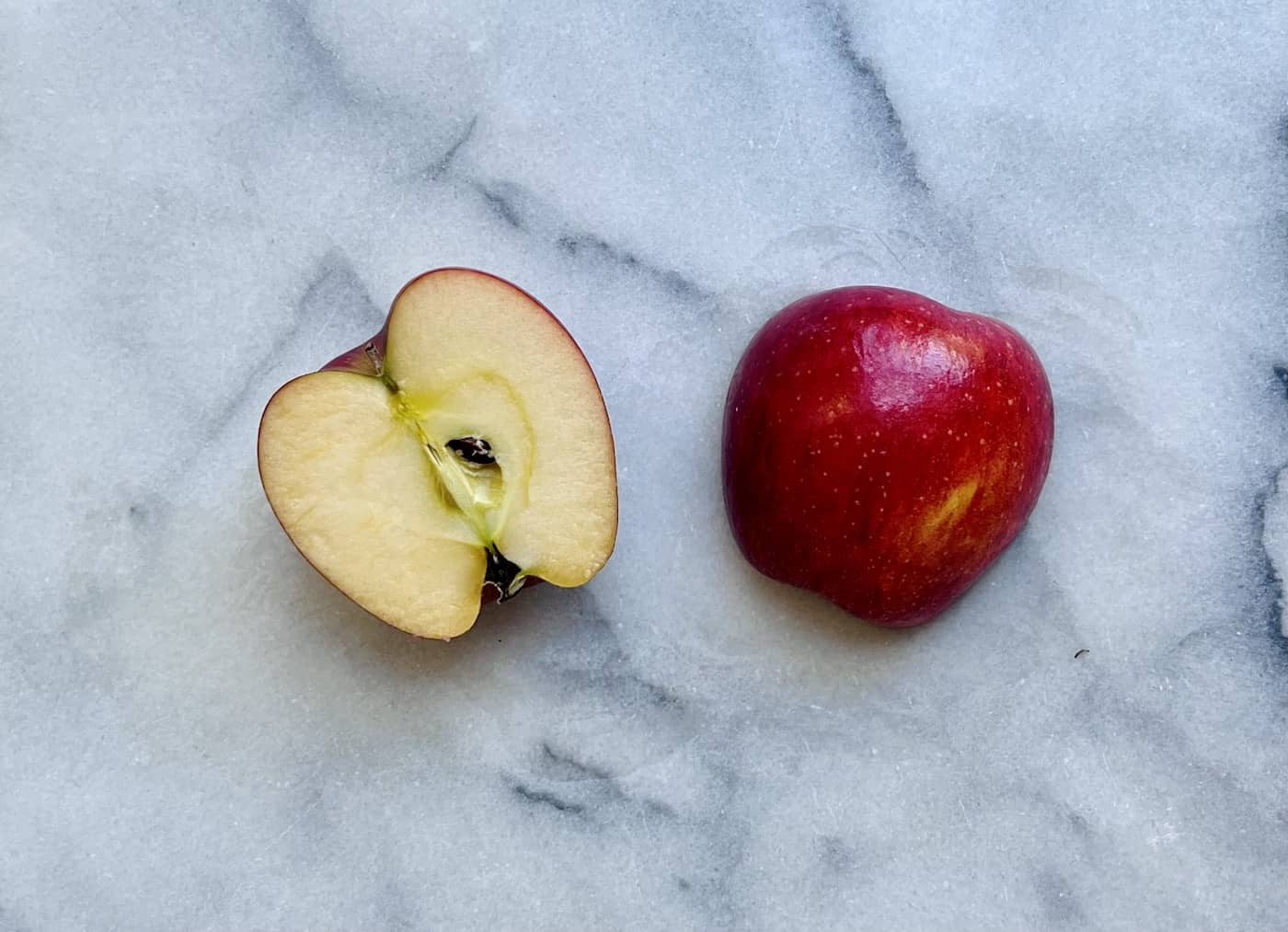
Harvest season for Envy apples
Envy™ Apples ripen late in the apple growing season in comparison to some other apples. In their native New Zealand, Envy Apples are typically harvested in April. In northern-hemisphere regions such as Washington state, these late-season apples typically ripen in October. Actual harvest dates vary by region and by weather conditions in a given year.
Envy™ Apples are in season year-round as they are grown in many different areas of the world. If you’re in North America, look for fresh Washington-grown apples in autumn/winter and fresh New Zealand-grown apples in spring/summer.
Fresh in April
- New Zealand
- Australia
- Chile
Fresh in October
- USA
- UK
- France
- Italy
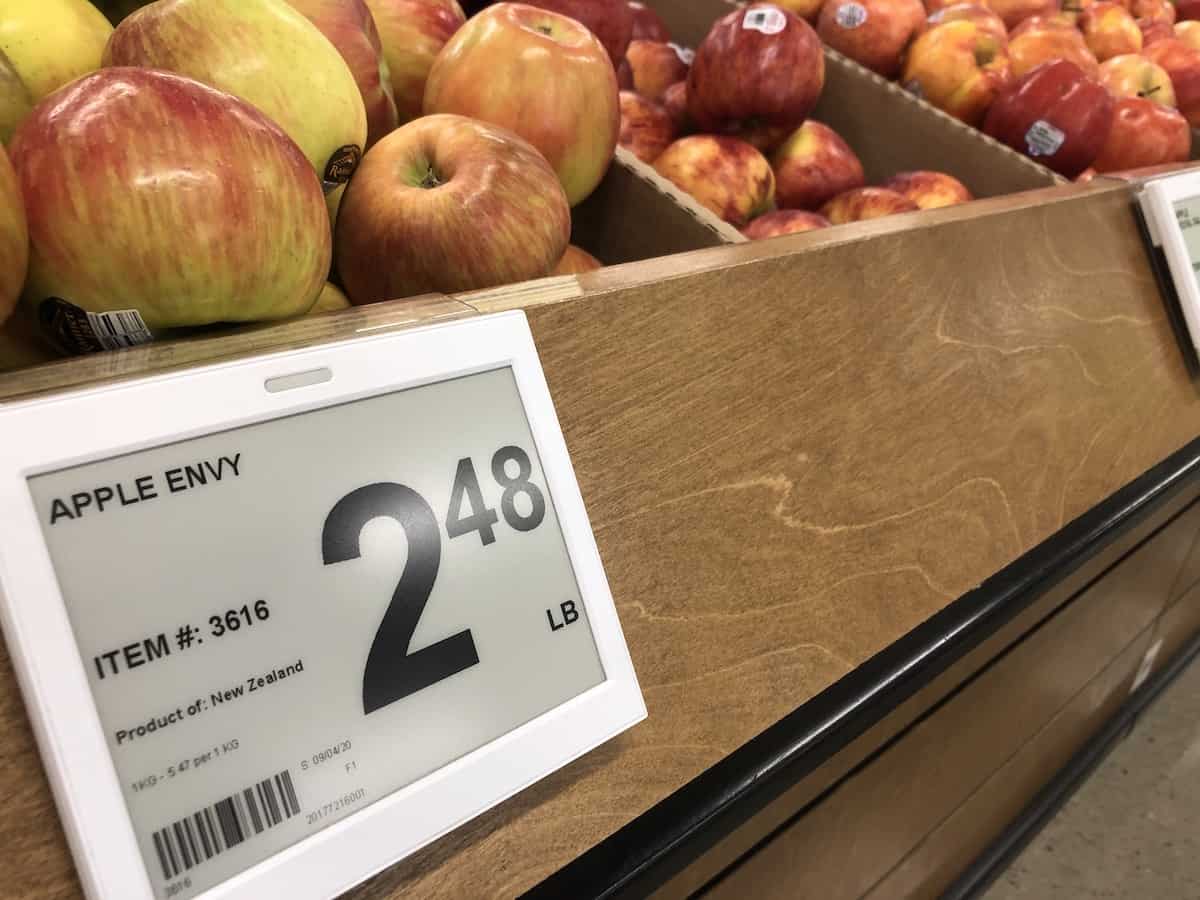
Tips for buying Envy apples
Envy™ Apples typically have fairly high-quality control due to their limited distribution. Look for apples with no visible bruising for the longest potential shelf life. Envy Apples are available at many orchards and supermarkets, including Kroger and Walmart.
Envy Apples are large, about 3 inches (8 cm) across. They often weigh 8 oz (0.5 lb, 225 g). There are generally two Envy apples in one pound. Envy™ Apples cost about $2.50 per pound ($5.50 per kg). A single apple might cost $1.25 when purchased at the grocery store.
Envy Apples can be stored at room temperature for a few weeks or placed in the crisper of the refrigerator for longer-term storage of up to several months. Envy Apples in commercial storage are kept in climate-controlled conditions to allow for months-long storage prior to international shipping.
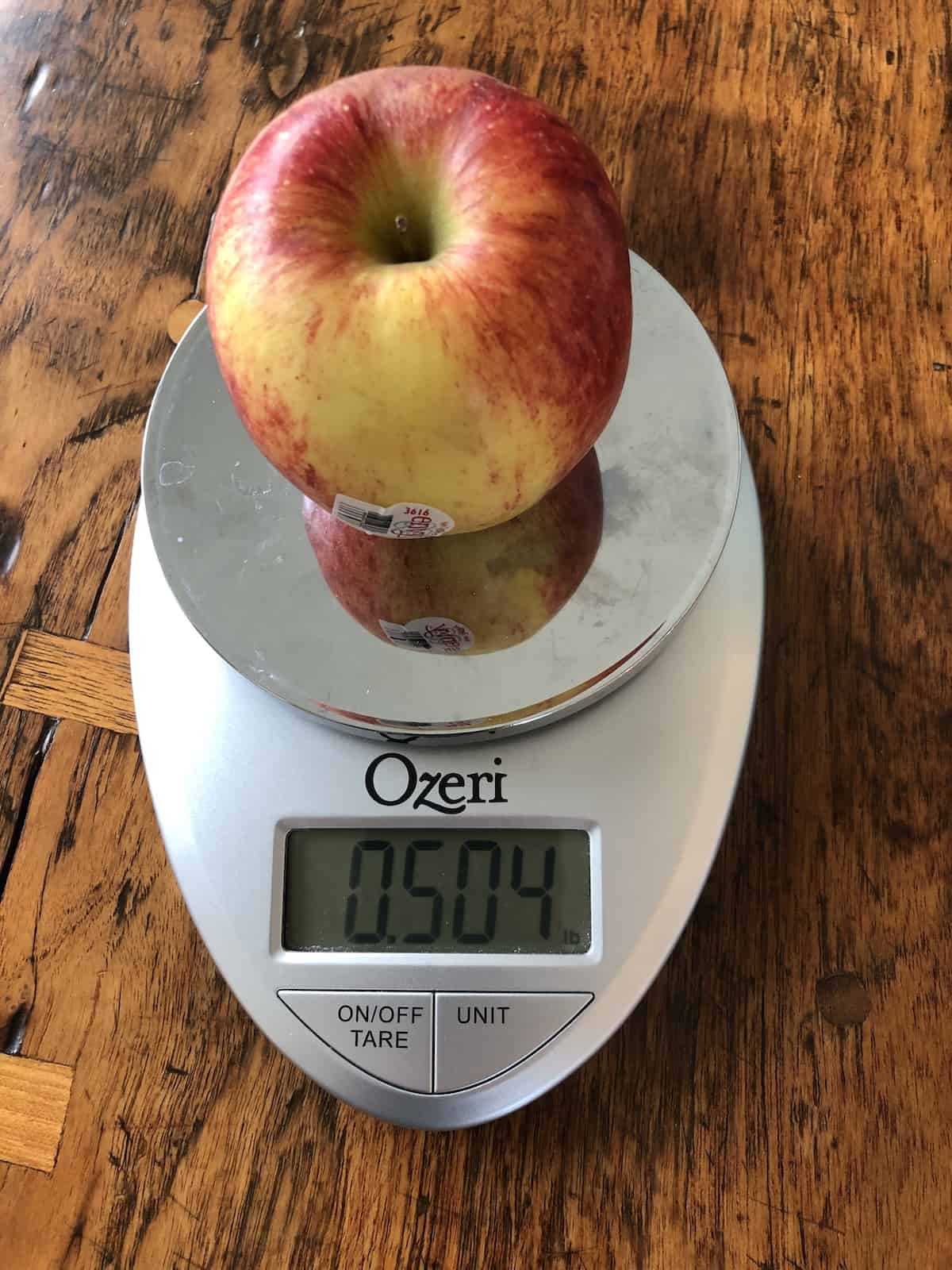
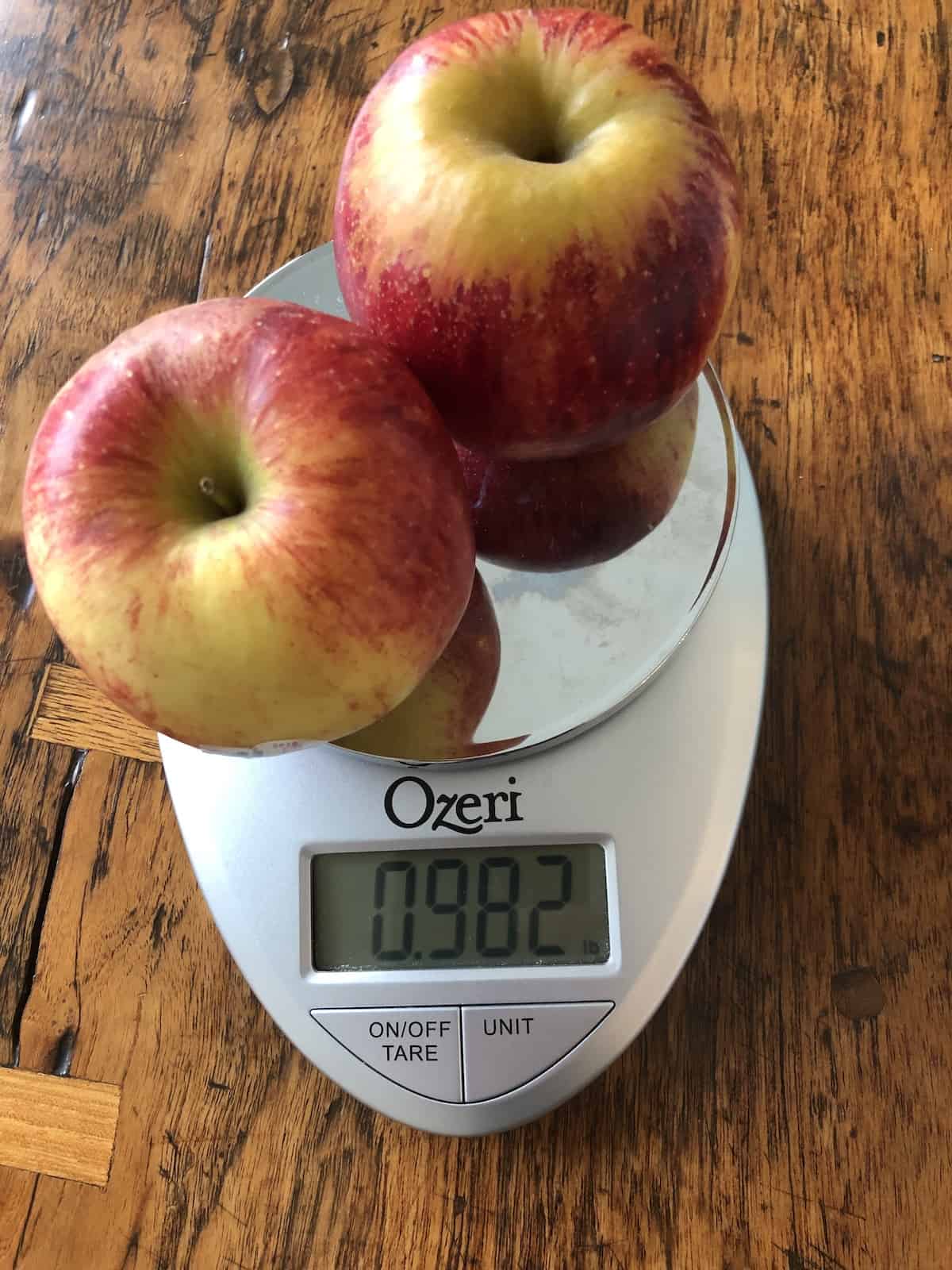
Pure joy! The Envy apple – crisp, with a sweet sophisticated flavor, heightens every experience. Have you tried the Envy apple yet? #EnvyApple #ultimateappleexperience pic.twitter.com/xNrSkH3A4X
— Envy Apples (@EnvyApples) September 3, 2020
What to make with Envy apples
Envy apples are incredibly versatile in recipes. They have all the all-around benefits and sweet taste of the Gala Apple, plus the perfect apple-pie-crunch texture of the Braeburn Apple. And then there’s the fact that it takes about 8 hours for them to turn brown after being sliced. They really are enviable!
Envy Apples are perfect on a cheese board with both mild kinds of cheese and aged types. The sweet apple has a fresh fruity flavor that is also a lovely pairing with savory main dishes, green salads, juice, and white wine. The hint of acidity keeps these apples from browning too quickly on the plate.
Baking with Envy apples
Envy apples are great for baking, as they combine the sweetness of Gala apples with the texture of Braeburns. This includes pie, cakes, crisps, and other desserts (or even savory baked apples). Use them all on their own, or combine them with other types for a varied texture in your seasonal favorites.
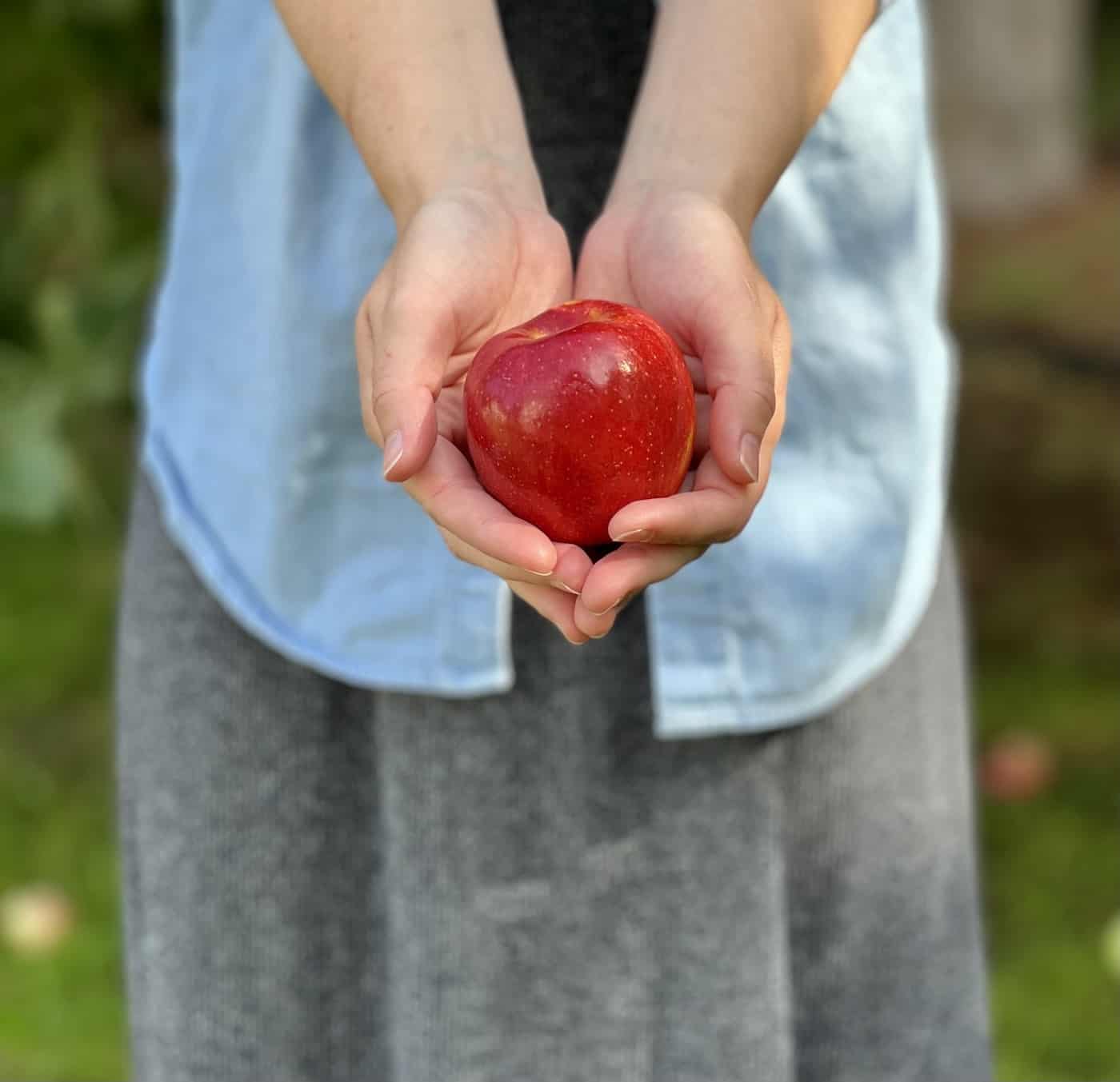
Envy apple recipes
Here are some of the best apple recipes to use when making your Envy apples:
Envy™ is a trademark of T&G Global.
Envy Apple Website: https://envyapple.com/en/
Envy Apples on Twitter: https://twitter.com/EnvyApples/
Substitute for Envy apples
When looking for a substitute for Envy™ apples, look first to their sibling, the Jazz™ apple. Jazz apples can be used in recipes in the same way that their larger relatives can. For fresh eating, Ambrosia, Cripps Pink, and Honeycrisp apples are excellent. And Ambrosia is slow to brown like Envy! Yum 🙂
More resources






